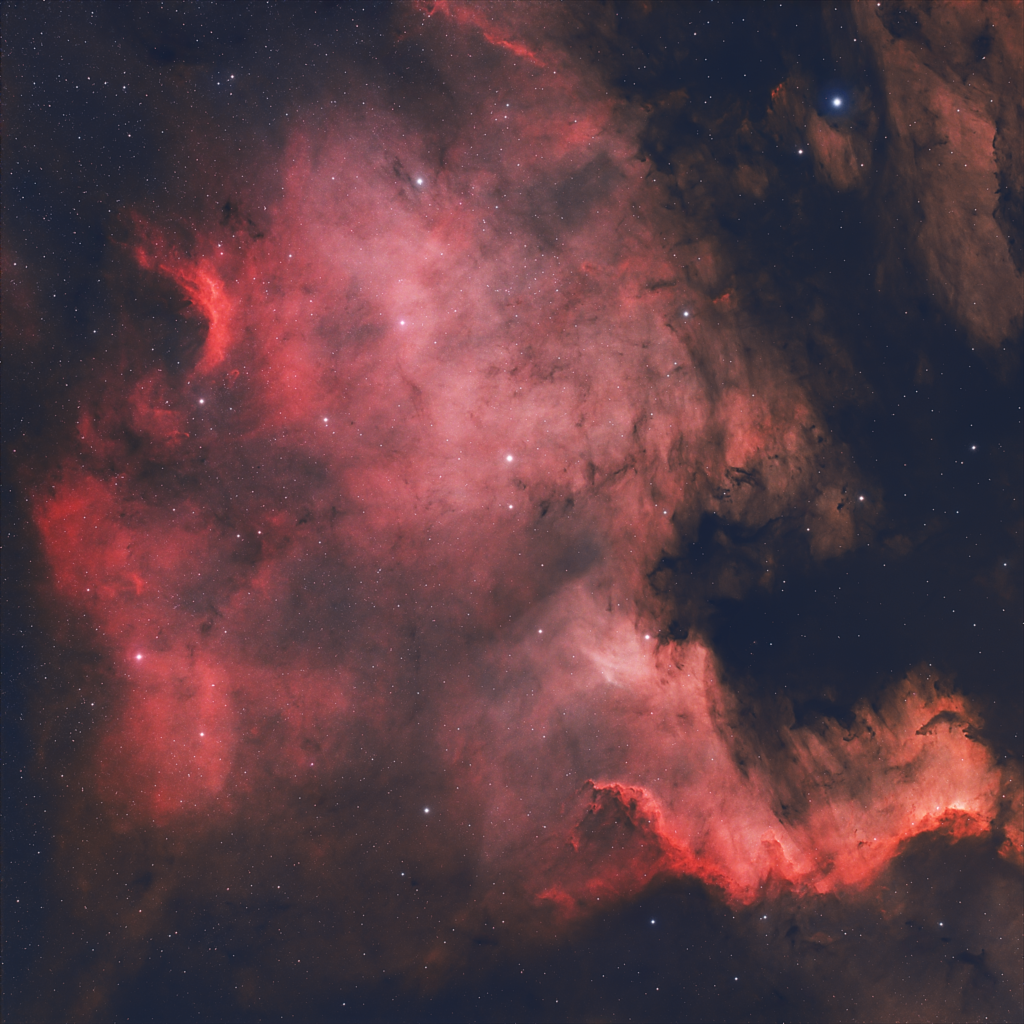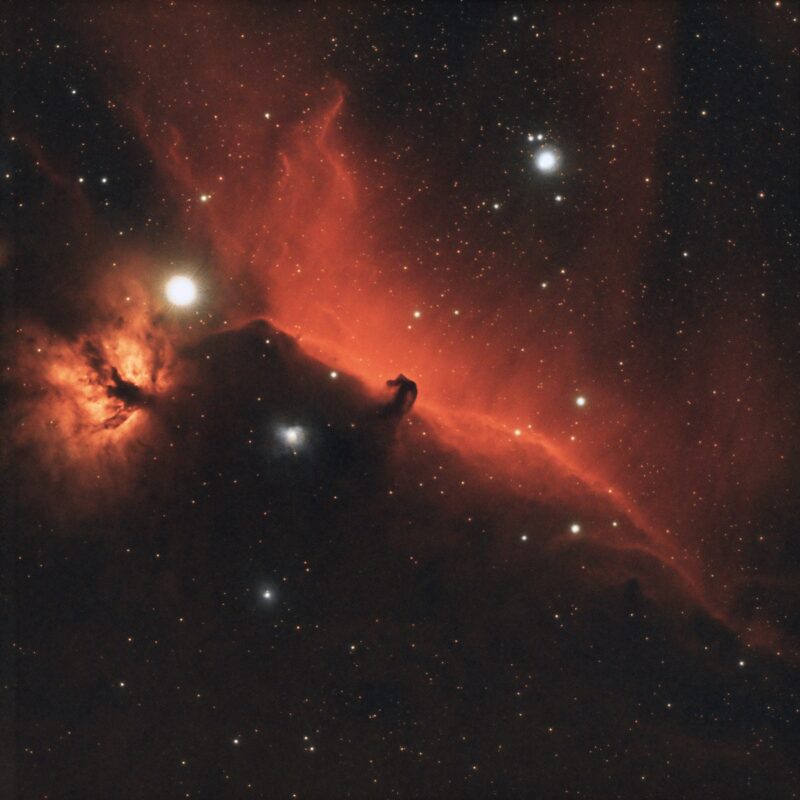The ZWO ASI533MC Pro is a cooled, one shot colour astronomy camera…and it’s EPIC! Capable of capturing nebulae, galaxies and star clusters, this entry level(ish) astronomy camera is the real deal.
You can also couple the 533 with a 2-inch filter drawer and use narrowband or broadband filters depending on your target of choice, which will only enhance your astrophotography to a whole new level.
ZWO ASI533MC Pro Video Review
At the time of recording, I had the ZWO ASI533MC Pro OSC for a little over 6 months and had used it for several imaging sessions. In this video I break down the specs, likes and dislikes, as well as showcasing a few of the images I’ve taken with it.
Here’s a few example images that I’ve captured with the 533 so far:



Specs:
Let’s talk a little about the specs, specifically the pixel scale and that square sensor.
· Sony IMX533MC sensor
· 9 megapixel 1 inch square sensor
· 3.76µm – bigger pixel size than the 183 but less than the 294
· 3008 * 3008 resolution
· USB 3
· Cool down to -35C
Pixel Scale
3.76µm is an ideal pixel size for most astrophotography setups and sits in the middle of the 183 and 294, which are 2.4µm and 4.63µm respectively. If you’re trying to choose between these 3 cameras, then I think it really boils down to which pixel size suits your setup best.
When considering pixel scale it’s important to work out if it will work for your current setup or not. To do that, there’s a simple calculation that can be done to determine whether a camera will work for you, or whether you’ll be under/over sampling. We’re looking for a number anywhere between 1 and 2 to be considered well sampled.
Calculation: pixel size / focal length x 206
So for my current setup with a 420mm FL telescope and the 533 the calculation is as follows:
3.76 / 420 x 206 = 1.8
What about the square sensor?
I hear you. At first glance, the small square sensor might appear to be quite limiting, but honestly it isn’t as big of a deal as you would expect. I think it’s biggest limiting factor is scaling your images for prints.
With the small resolution, you’re quite limited in how much you can scale your image while maintaining good quality, but you can always get around that by imaging your target as a mosaic instead. Plus, a square sensor makes it easier to share images to social media sites like Instagram that favour a square box for you to showcase your best work.
There’s also the benefit of having no amp glow whatsoever, of course amp glow can be calibrated out with dark frames, but it’s nice that it doesn’t need to be with the 533.
Likes & Dislikes
Likes:
· Zero amp glow
· Cooled camera gives very clean images
· Comes with all adapters to achieve back spacing required for focus
· Padded case
Dislikes:
· No power supply included – for £900 I expect everything I need to be in the box.
· Square images aren’t for everyone – they of course can be cropped but you risk losing part of the DSO. I don’t personally mind the square sensor, but I include it here as it can be a limiting factor to others.
The 533 vs 183 & 294
How does it compare to other cameras in the ZWO range?
The 183 has a different sensor, although still a 1-inch sensor, it has a different resolution and read noise. The 533 is more sensitive in its light gathering capabilities so if you can stretch your budget to the 533 then I would recommend going for that. The 183 is about £100 cheaper though so that needs to be factored in. However, the 533 also has the benefit of having zero amp glow, which is the only camera out of the 3 that can boast such a thing.
The 294 has a 4/3 sensor so will give you a FOV more akin to a DSLR but introduces amp glow to your images. If square images are a problem for you then the 294 is the way to go. You will be dealing with amp glow but that can be calibrated out with dark frames, but it is another £80 on top of the 533 price, so £200 more than the 183.
Which one would I go for? For me it’s the 533, but your choice may vary. The square sensor isn’t a sticking point for me, and zero amp glow is a real selling point over the other 2 options.
Upgrading from a DSLR
If you’re coming to the 533 from a DSLR then there are a few things to consider:
It’s very easy to get used to having the live screen view on the back of your DSLR to use for framing targets or focusing. However, a dedicated astronomy camera doesn’t have a screen so you will have to control this camera using external software on a laptop or PC.
I use Astroberry on a Raspberry Pi and then use a web browser on my laptop to connect to it remotely, this works really well for me and I have lots of tutorials on my YouTube channel explaining how to use Astroberry, which you can find here. There are lots of other software choices out there such as Astrophotography Tool and NINA.
With a DSLR you will be used to imaging in the RAW format, but a dedicated astronomy camera such as the 533 uses the FITS file format. Not a big issue for software such as DeepSkyStacker that can take your FITS files, stack them and output them as a TIFF file as normal, but you’ll need dedicated software to be able to view your individual FITS files in Windows.
Then there’s the cooling – and WOW what a difference this can make to your individual subs. My images come off the camera looking much cleaner thanks to the 533 sensor being cooled and having no amp glow.
Be sure not to try and cool your camera too much in the summer months as it will make the fan work too hard and you may not be able to reach your desired temperature. I have found that -10 degrees works well for me all year round, unless it’s an unusually warm summer night, then -5 degrees is really the lowest it can go, but that’s still probably 30 degrees cooler than a DSLR sensor!

